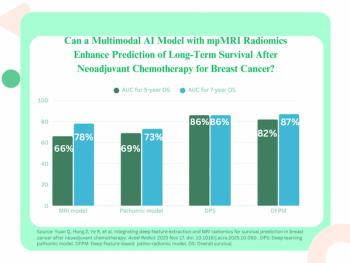
Expanded MR protocol improves assessment of myocardial infarction
Combining T2-weighted MRI to detect microvascular obstructions with delayed-enhancement imaging to measure myocardial viability offers clinicians a better way to assess myocardial infarction, according to a new study from Japan.
Combining T2-weighted MRI to detect microvascular obstructions with delayed-enhancement imaging to measure myocardial viability offers clinicians a better way to assess myocardial infarction, according to a new study from Japan.
The appropriate management of myocardial infarction hinges on its prompt and accurate diagnosis. T2-weighted imaging with delayed gadolinium-contrast enhancement has shown promise in this setting. But according to the clinical literature, their combined use in clinical practice is limited, potentially allowing underestimation of the extent of myocardial infarction.
Microvascular obstruction highlights this problem. Though detectable by contrast MR, it may not always be apparent on T2-weighted imaging. Research data reveal that microvascular obstructions can cause new myocardial infarcts even after coronary reperfusion. A comprehensive cardiac MR exam that involves delayed enhancement and T2-weighted imaging could more accurately evaluate the extent of acute myocardial infarction, said principal investigator Dr. Yoko Mikami, a radiologist at Tsu City's Mie University Hospital in Mie prefecture.
"Non-contrast–enhanced MRI alone is not sufficient for accurate diagnosis of acute MI," Mikami told Diagnostic Imaging.
Mikami and colleagues prospectively enrolled 37 patients diagnosed with acute myocardial infarction. Patients underwent a protocol including black-blood fat-suppressed T2-weighted and late enhanced MRI about five days after the onset of acute myocardial infarction. The researchers determined the signal intensity of T2 images of infarcted areas, as depicted by delayed enhancement, in relation to the signal intensity of remote, normal myocardium.
The investigators found that the average signal intensity on T2-weighted images of the areas with microvascular obstruction was significantly lower than areas without microvascular obstruction. The findings were published in the October issue of the American Journal of Roentgenology.
Only 22 of 73 (30%) delayed enhanced segments with microvascular obstruction had increased signal intensity on T2-weighted imaging. In contrast, 73 of 77 segments (95%) without microvascular obstruction had high signal intensity on T2-weighted imaging. The difference was statistically significant (p <0.05).
The technique has been incorporated into routine clinical practice at Mikami's radiology department, mostly for patients with severe acute myocardial infarction. The protocol includes cine, T2-weighted, rest perfusion, and delayed enhanced MRI.
Despite several limitations, mainly the small sample size and the lack of histopathologic confirmation of a relationship between microvascular obstruction and hemorrhagic infarction, the study has several implications for patients and for clinical practice, Mikami said. An accurate diagnosis of MI optimizes patient management, leads to more effective pharmacologic and interventional treatments, and improves outcomes.
"That helps reduce the cost of performing other expensive studies, such as SPECT," Mikami said. "When compared with echocardiography, MRI is more objective and reproducible, and is not influenced by lung air."
Newsletter
Stay at the forefront of radiology with the Diagnostic Imaging newsletter, delivering the latest news, clinical insights, and imaging advancements for today’s radiologists.




























